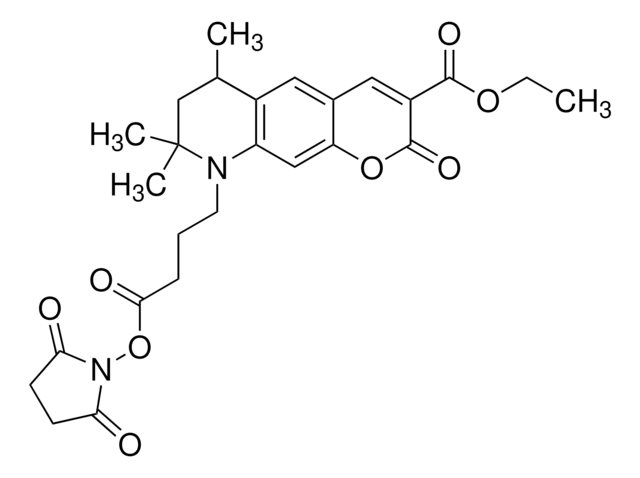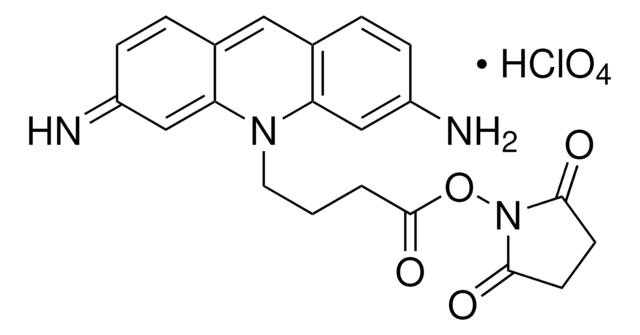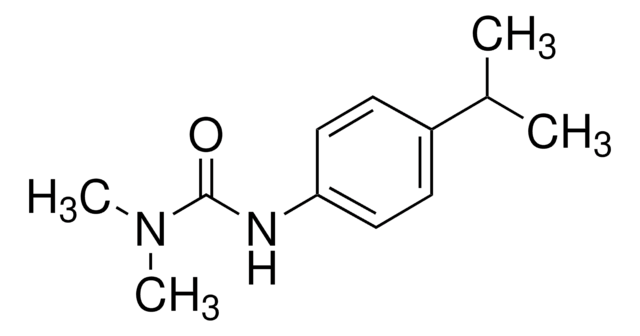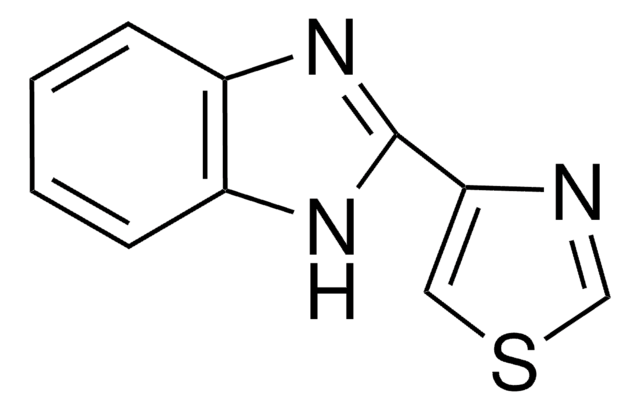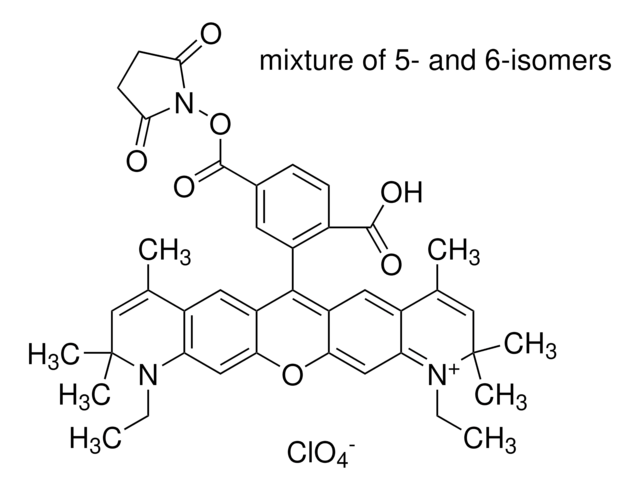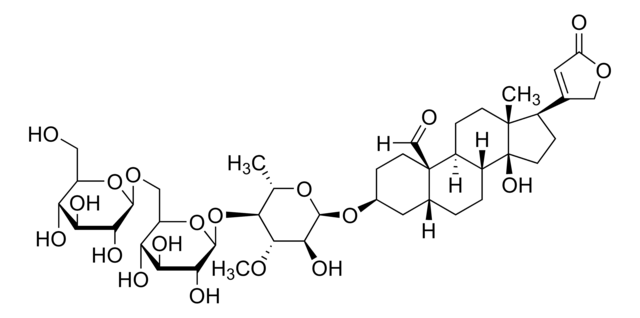56759
Atto 425
BioReagent, suitable for fluorescence
About This Item
Empfohlene Produkte
Produktlinie
BioReagent
Qualitätsniveau
Assay
≥90% (HPLC)
Form
(Report result)
Hersteller/Markenname
ATTO-TEC GmbH
Durchlässigkeit
254 nm, >90%
425 nm, >90%
Fluoreszenz
λex 440 nm; λem 484 nm
λ
in PBS, pH 7.4
in ethanol (with 0.1% trifluoroacetic acid)
UV-Absorption
λ: 423-429 nm Amax
Eignung
suitable for fluorescence
Versandbedingung
wet ice
Lagertemp.
−20°C
SMILES String
CCOC(=O)C1=Cc2cc3C(C)CC(C)(C)N(CCCC(O)=O)c3cc2OC1=O
InChI
1S/C22H27NO6/c1-5-28-20(26)16-10-14-9-15-13(2)12-22(3,4)23(8-6-7-19(24)25)17(15)11-18(14)29-21(16)27/h9-11,13H,5-8,12H2,1-4H3,(H,24,25)
InChIKey
WNDDWSAHNYBXKY-UHFFFAOYSA-N
Anwendung
Rechtliche Hinweise
Lagerklassenschlüssel
11 - Combustible Solids
Flammpunkt (°F)
Not applicable
Flammpunkt (°C)
Not applicable
Analysenzertifikate (COA)
Suchen Sie nach Analysenzertifikate (COA), indem Sie die Lot-/Chargennummer des Produkts eingeben. Lot- und Chargennummern sind auf dem Produktetikett hinter den Wörtern ‘Lot’ oder ‘Batch’ (Lot oder Charge) zu finden.
Besitzen Sie dieses Produkt bereits?
In der Dokumentenbibliothek finden Sie die Dokumentation zu den Produkten, die Sie kürzlich erworben haben.
Kunden haben sich ebenfalls angesehen
Unser Team von Wissenschaftlern verfügt über Erfahrung in allen Forschungsbereichen einschließlich Life Science, Materialwissenschaften, chemischer Synthese, Chromatographie, Analytik und vielen mehr..
Setzen Sie sich mit dem technischen Dienst in Verbindung.